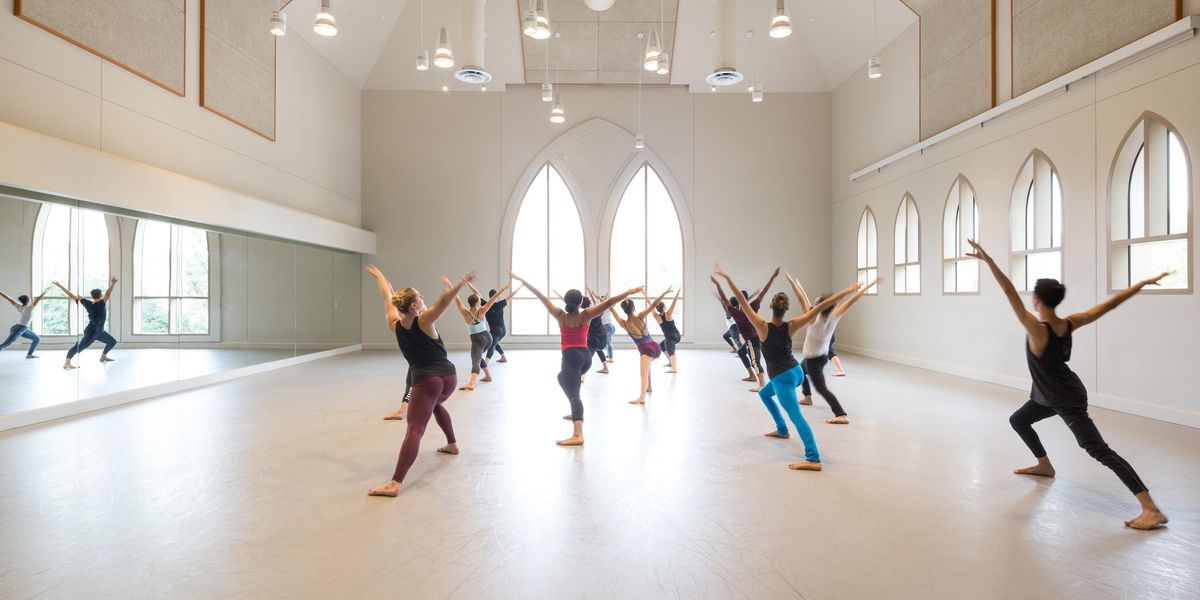Teacher's Wisdom
Since helping to create contact improvisation in the early 1970s with Steve Paxton and others, Nancy Stark Smith has been traveling the globe, teaching and performing improvisational dance. She teaches often at the Bates Dance Festival and takes time from her touring schedule to publish Contact Quarterly, a biannual journal of dance and improvisation. Kristin Horrigan spoke with Stark Smith at her home in Florence, MA.
Could you explain what contact improvisation is?
It is an exploration of the movement that’s possible when two bodies are in physical contact, sharing balance, communicating through weight and momentum. You’re using not only your own body and another body, but getting to know the physical forces involved: gravity, momen-tum, inertia, friction. You’re playing with these forces in “conversation” with your partner. What your partner proposes will affect how you can respond.
What are some of the problems that beginners struggle with?
A big one is fear. There’s fear of falling—in contact improvisation, we’re falling all the time. We are in a constant state of being off balance, which is the fun of it! There’s fear of not knowing what comes next. There’s also fear of the awkwardness that comes from exploring new movement pathways. How can you work with that awkwardness and be curious, rather than trying to get rid of it? Then there’s the fear of being too heavy, the fear of being hurt, or hurting someone else. Other fears…TOUCH. In our culture we tend to use touching as a means of expressing love or violence, and the touch in contact is not necessarily either. It’s a listening through touch for movement or balance.
The lifting in contact improvisation can appear to require great amounts of strength. How do you teach dancers to support their partners’ weight?
Practice is one way. Another way is to use your skeleton so that you’re not lifting as much through your muscles as through your bones. Your bones are strong and light, and they’re made to support weight. Timing is another way. When a person is jumping towards you, you can get your arms underneath their center as they’re starting to go up. You guide the weight onto yourself as it goes into the air towards the top of its arc before the person loses momentum and gets heavy.
In your classes you talk about the importance of “the last six inches” before a falling body encounters the floor.
The floor is your first partner in contact improvisation. Every fall that happens, whether you’re falling off someone’s shoulder or you’re just changing level by yourself, you’re going to have to pass through that last six inches and negotiate safely both to and up from the floor. If you can separate the first moment of touch from the full impact, and spread the transfer over a little bit of time, the weight can transition relatively slowly—we’re talking about fractions of seconds—then you have a smooth transition to the floor.
What do you believe makes good performance improvisation? A good performance might be the same whether you’re improvising or not. It’s a combination of the clarity of the structure—the choreography you could say—and the interpretation of the performer. I believe that being present in your body and in your movement is the foundation for a beautiful dancer, and that’s true in any form. If someone is just executing moves and is not engaged, I’m not interested. On the other hand, there needs to be a balance between internal focus and communicating to an audience.
When improvising, it’s possible to fall into ruts and find oneself doing the same things over and over again. How do you help dancers break out of their patterns?
I suggest just becoming more aware of when they’re doing the same old thing. At first, what tends to happen is that people realize it after they’ve done it. Then, as they strengthen their awareness, they’re in the middle of doing it, and they think, “Oh, I’m doing that thing again.” Then, they’re at the beginning, and they think, “Oh, I’m just about to do that thing again.” That’s where they can make a change. At that point, you can open up to another possibility, just by not doing the thing you always do. Leave some space. See what happens!
Can you talk about the connection of contact improvisation to the ideology of the ’60s—the social and political philosophy of the time?
I feel like the dancing embodied some of the qualities that had to do with our relationship to power structures—whether it was challenging the government or their participation in the Vietnam War, or whether it was challenging social roles, the sexual revolution, gender roles. Can women be strong? Can men be tender? Can women and women work together? Can men and men? On the level of how dances get made and what a choreographer is and what a performer is, that was a change that came from those times as well. There wasn’t a master choreographer telling the dancers what to do. You can’t control what’s going on completely, you have to participate. You have to cooperate. Contact improvisation doesn’t work if you don’t.




